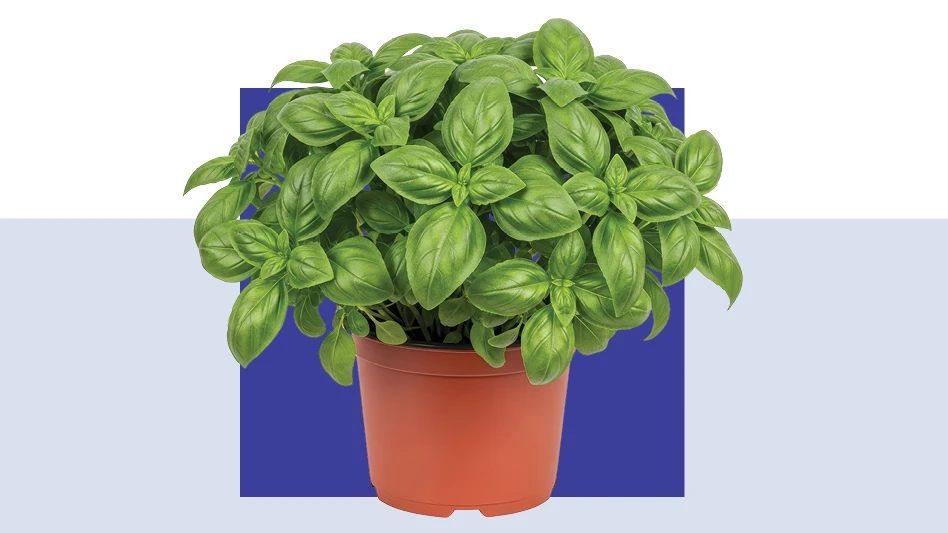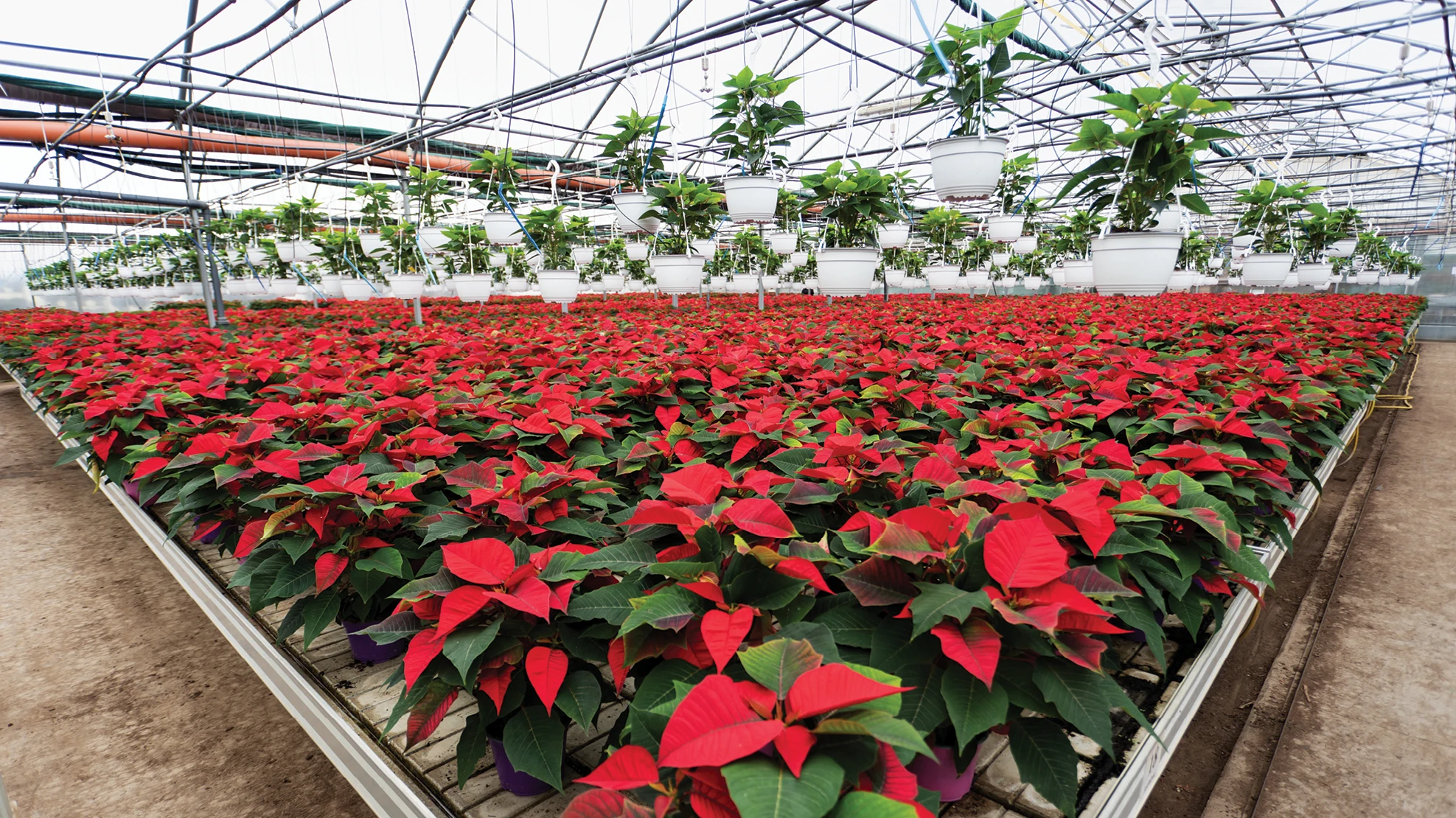 A.R. Chase A.R. Chase |
Every disease has at least one season that favors its development. For Rhizoctonia it’s the summer. This fungus usually prefers the heat, humidity and rainfall that occur in many parts of the United States during the summer. In the southeastern U.S. it can also be found in spring and fall when the environment is still favorable for its development.
1. What is the plant host range of Rhizoctonia?
There are several types of Rhizoctonia that attack ornamentals and they have very little host specialization, meaning one can attack many types of plants. Rhizoctonia solani is the most commonly found and tends to have a very broad host range. In contrast, binucleate (two nuclei per cell) pathogens are most common on woody ornamentals with aerial blight in the southeastern U.S. Still other types of Rhizoctonia attack turf grass but they are not often found on ornamentals. The same R. solani isolate that can cause leaf spot on aglaonema can cause cutting rot on poinsettia and damping-off on celosia.
Rhizoctonia root rot: Aglaonema, azalea, begonia, campanula, ferns, holly, impatiens, juniper, philodendron, poinsettia and spathiphyllum.
Rhizoctonia stem rot: Aster, dianthus, impatiens, poinsettia and pothos.
Rhizoctonia aerial blight (also called web-blight): Azalea, holly, juniper and pittosporum.
Rhizoctonia bulb rot: Calla lily, iris and gladiolus.
Rhizoctonia cutting rot: Azalea, hydrangea, osteospermum, pittosporum, poinsettia, rosemary and Vinca minor.
Rhizoctonia damping-off: Celosia, gomphrena, vinca, impatiens, stock and snapdragon.
2. What conditions favor Rhizoctonia?
Rhizoctonia aerial blight and leaf spot occur primarily in the warmer months when high temperatures coincide with high moisture levels. This is common in the southeastern U.S. when rainfall and temperatures both peak. In other areas of the country, the nurseryman creates ideal conditions for these diseases by growing plants in covered structures which are heated and irrigated overhead.
3. What are some of the symptoms of Rhizoctonia?
Rhizoctonia spp. usually attack plants at the soil line, causing constriction of the stem which results in girdling and death of the plant tops. The pathogen can attack leaves as well and is especially severe when plants are grown close together and leaves are wet.
Entire stock beds or flats can be lost to Rhizoctonia aerial blight in very short periods of time, sometimes in a matter of a few days. The pathogen is soil-borne which means it lives in the soil or growing medium and causes both pre- and post-emergence damping-off of many seed produced crops.
Disease development can occur in a couple of days so plants should be scouted and monitored for symptoms at least weekly. Brown, irregularly-shaped spots form anywhere on foliage or stems. The spots can be up to 1 inch across and sometimes have concentric rings (target-like).
When humidity is high the web-like brown mycelium of the pathogen can cover portions of the plant which are infected. This can be seen many times in aerial blight and sometimes when flats of seedling crops are attacked.
Rhizoctonia stem rot is typified by brown cankers forming at the soil line. The cankers are sunken and dry appearing and result in collapse of the plant tops. The canker can be very constricted and is sometimes called wire-stem on field-grown crops like beans and cotton. It is also sometimes only found on one side of the stem and is called sore-shin (especially on cotton).
One of the most typical expressions of Rhizoctonia on ornamentals is cutting rot. This can occur within a week of sticking cuttings and looks like many cuttings rots. The most typical cause of cutting rot has been Rhizoctonia in my experience.
Root rot caused by Rhizoctonia appears much like root rots caused by other fungi. Roots become brown, somewhat mushy and disintegrate. An accurate laboratory diagnosis is therefore crucial since fungicides that control Pythium do not control Rhizoctonia and vice versa. Keep in mind that mixed infections, cases where two pathogens are active, are also common.
Quick Control Tips:
Only an accurate diagnosis allows you to choose the best and most complete control strategies. Be sure to watch plants for above ground signs of root rot, including yellow or pale green leaves, small leaves, wilting and stunting.
Soil-borne pathogens such as Rhizoctonia spp. can escape notice and therefore cause serious losses before they are identified. Prevention is therefore the key to controlling Rhizoctonia diseases.
Use healthy plants, new or sterilized pots and growing media and avoid placing plants directly on the ground. Try to increase space between plants if possible and manage overhead mist to minimize the amount of water or time with active mist in a propagation area. If you follow these steps the fungicides you apply will have the greatest chance to work. As mentioned earlier, Rhizoctonia spp. occur in the potting medium and can cause stem and leaf diseases, making the application site for a fungicide critical.
The most effective fungicide for Rhizoctonia diseases in trials at Chase Horticultural Research has been fludioxinil (Medallion 50W). This active ingredient is also found in Palladium (a combination with cyprodinil) and Hurricane (a combination with mefenoxam).
Extensive testing by many universities on many ornamentals has shown that Medallion is extremely effective for Rhizoctonia diseases. Medallion is not safe for use as a drench on impatiens and New Guinea impatiens. Most other plants tested were not adversely affected by Medallion.
Two other very effective fungicide groups include strobilurins (MOA 11) and benzimidazoles (MOA 1).
For biological control, our trials have shown that RootShield (Trichoderma harzianum) can be very effective. Keep in mind that it is most effective when used on Rhizoctonia root rot and not leaf spot or aerial blight and that it must be used preventively.
Have a question? You can write Ann at archase@chaseresearch.net.
|
 A.R. Chase
A.R. Chase





